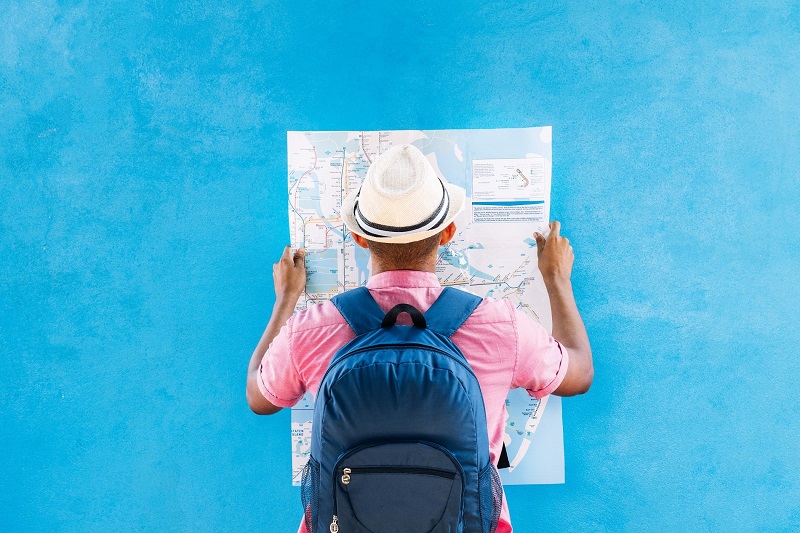Jet lag can be a frustrating and exhausting experience for travelers, especially those who frequently cross multiple time zones. Jet lag occurs when the body’s internal clock, or circadian rhythm, is disrupted by rapid travel across time zones. This disruption can lead to a range of symptoms, including fatigue, insomnia, headaches, and digestive issues.

Fortunately, there are several strategies that travelers can use to minimize the effects of jet lag. These strategies include adjusting sleep schedules prior to travel, staying hydrated, avoiding alcohol and caffeine, and exposing oneself to sunlight or bright light at appropriate times. Additionally, there are several over-the-counter and prescription medications that can be used to alleviate symptoms of jet lag. By implementing these strategies, travelers can arrive at their destinations feeling more rested and ready to enjoy their trip.
Understanding Jet Lag

Causes of Jet Lag
Jet lag is a common condition that affects travelers who cross multiple time zones. It occurs when the body’s internal clock, or circadian rhythm, is disrupted, leading to a mismatch between the body’s natural sleep-wake cycle and the local time at the destination.
The primary cause of jet lag is the rapid change in time zones, which can disrupt the body’s natural rhythm. When traveling eastward, the body is forced to adjust to an earlier time zone, making it difficult to fall asleep at night and causing fatigue during the day. Conversely, when traveling westward, the body is forced to adjust to a later time zone, leading to difficulty waking up in the morning and increased alertness in the evening.
Physiological Impact
Jet lag can have a significant impact on the body’s physiological functions. The most common symptoms of jet lag include fatigue, insomnia, irritability, headaches, and gastrointestinal problems. These symptoms can be exacerbated by dehydration, lack of exercise, and poor nutrition.
Jet lag can also affect the body’s immune system, making travelers more susceptible to illness. This is because the body’s natural defense mechanisms, such as the production of white blood cells, are regulated by the circadian rhythm. When the circadian rhythm is disrupted, the body may not be able to produce enough white blood cells to fight off infections.
In conclusion, understanding the causes and physiological impact of jet lag is essential for developing effective strategies to minimize its effects. By taking steps to adjust the body’s circadian rhythm, such as gradually adjusting sleep schedules and staying hydrated, travelers can reduce the severity of jet lag and enjoy a more comfortable journey.
Pre-Flight Preparation

Preparing for a long-distance flight can be a daunting task, especially if you’re traveling across different time zones. However, with a little bit of planning and preparation, you can minimize the effects of jet lag and make your transition to a new time zone as smooth as possible. Here are a few tips to help you prepare for your flight:
Sleep Schedule Adjustments
One of the most effective ways to prepare for a time zone transition is to gradually adjust your sleep schedule in the days leading up to your flight. This can help your body adjust to the new time zone more quickly, which can reduce the severity of jet lag symptoms.
To do this, start by shifting your sleep schedule by 30 minutes each day, either earlier or later depending on the direction you’re traveling. For example, if you’re traveling eastward and your destination is six hours ahead of your current time zone, start going to bed 30 minutes earlier each night for the six nights leading up to your flight.
Diet and Hydration
What you eat and drink before and during your flight can also have a significant impact on your body’s ability to adjust to a new time zone. It’s important to stay hydrated by drinking plenty of water and avoiding alcohol and caffeine, which can disrupt your sleep.
In addition, try to eat light, healthy meals before and during your flight. Avoid heavy, greasy foods that can make you feel sluggish and uncomfortable. Instead, opt for foods that are high in protein and complex carbohydrates, such as lean meats, whole grains, and vegetables.
By following these pre-flight preparation tips, you can help minimize the effects of jet lag and make your transition to a new time zone as smooth as possible.
During the Flight

In-Flight Strategies
There are several in-flight strategies that can help minimize the effects of jet lag. One of the most important strategies is to stay hydrated. Drinking plenty of water during the flight can help prevent dehydration, which can exacerbate the symptoms of jet lag. It is also important to avoid alcohol and caffeine, as these can disrupt sleep and further dehydrate the body.
Another strategy is to adjust sleep and meal times to the destination time zone as soon as possible. This can help the body adjust to the new time zone more quickly. For example, if the destination is six hours ahead, try to sleep and eat six hours earlier than usual.
It is also helpful to get up and move around the cabin during the flight. Sitting for long periods of time can cause stiffness and discomfort, which can make it difficult to sleep or stay awake at the appropriate times. Stretching, walking around, and doing simple exercises can help keep the body alert and prevent stiffness.
Minimizing Sleep Disturbances
Sleep disturbances are a common problem during long flights, particularly when crossing multiple time zones. To minimize sleep disturbances, it is important to create a comfortable sleep environment. This may include using earplugs or noise-cancelling headphones to block out noise, wearing an eye mask to block out light, and using a neck pillow or other support to prevent neck stiffness.
It is also helpful to avoid using electronic devices before sleep. The blue light emitted by electronic devices can disrupt the body’s natural sleep-wake cycle, making it more difficult to fall asleep. Instead, try reading a book or listening to calming music to help relax and prepare for sleep.
Finally, it is important to be mindful of the cabin environment. The temperature, humidity, and air pressure in the cabin can all affect sleep quality. Dressing in layers, using a blanket or pillow for added comfort, and adjusting the air vent as needed can help create a more comfortable sleep environment.
Post-Flight Adjustments
After a long flight, it’s important to make some adjustments to help your body adjust to the new time zone. Here are two effective strategies for post-flight adjustments.
Natural Light Exposure
Exposure to natural light can help regulate your body’s internal clock and promote wakefulness during the day. After arriving at your destination, try to spend some time outside in natural light. Even if it’s cloudy, the light can still be effective. If you’re unable to go outside, consider opening the curtains or blinds in your room to let in natural light.
Physical Activity
Physical activity can help combat the fatigue and sluggishness that often accompanies jet lag. After arriving at your destination, try to engage in some light physical activity such as taking a walk or doing some stretching. This can help increase blood flow and promote wakefulness. However, it’s important not to overdo it, as intense exercise can actually make jet lag symptoms worse.
By incorporating natural light exposure and physical activity into your post-flight routine, you can help your body adjust to the new time zone and minimize the effects of jet lag.
Pharmacological Aids
For those who prefer a more direct approach to combatting jet lag, there are pharmacological aids available that can help regulate sleep patterns and ease the transition to a new time zone. Two common pharmacological aids are melatonin and sleep medications.
Melatonin
Melatonin is a hormone that is naturally produced by the body and helps regulate sleep-wake cycles. It is available as a supplement and can be taken to help reset the body’s internal clock when traveling across time zones.
Studies have shown that melatonin can be effective in reducing the symptoms of jet lag, particularly when taken at the correct time. It is recommended to take melatonin a few hours before the desired bedtime in the new time zone. It is important to note that melatonin should not be taken during the day, as it can cause drowsiness.
Sleep Medications
Sleep medications, such as benzodiazepines or non-benzodiazepine hypnotics, can be prescribed by a doctor to help induce sleep during travel. These medications work by depressing the central nervous system, causing drowsiness and promoting sleep.
While sleep medications can be effective in helping to combat jet lag, they should only be used under the guidance of a healthcare professional. They can have side effects such as dizziness, confusion, and impaired coordination, and can also be habit-forming if used for an extended period of time.
In summary, pharmacological aids such as melatonin and sleep medications can be effective in helping to alleviate the symptoms of jet lag. However, it is important to use them responsibly and under the guidance of a healthcare professional.
Technology and Tools
Jet Lag Apps
There are several mobile apps available that can help travelers adjust to new time zones and minimize the effects of jet lag. These apps work by providing personalized sleep schedules, light therapy, and other tools to help users regulate their circadian rhythms.
One popular app is Entrain, which uses mathematical models to create customized schedules based on the user’s individual sleep patterns and travel itinerary. Another app, Timeshifter, was developed with input from NASA scientists and offers personalized advice on when to sleep, seek light, and avoid caffeine.
Wearable Tech
Wearable technology, such as smartwatches and fitness trackers, can also be useful tools for managing jet lag. Some devices offer features like sleep tracking, light exposure monitoring, and even guided breathing exercises to help users relax and fall asleep more easily.
One example is the Fitbit Charge 5, which tracks users’ sleep stages and provides personalized insights and tips for improving sleep quality. Another option is the Philips SmartSleep Connected Sleep and Wake-up Light, which uses light therapy to help users adjust to new time zones and wake up feeling refreshed.
By using these technology and tools, travelers can better manage the effects of jet lag and enjoy their trips to the fullest.
Special Considerations
Traveling with Children
When traveling with children, it is important to plan ahead for time zone transitions. Children may have a harder time adjusting to new sleep schedules, which can lead to crankiness and disrupted travel plans. Parents can help their children adjust to new time zones by gradually shifting their sleep schedules a few days before the trip. This can help ease the transition and prevent jet lag.
It is also important to keep children well-rested during travel. Parents should encourage their children to sleep on the plane or during layovers, and provide them with comfortable sleeping arrangements at their destination. Additionally, parents should be mindful of their children’s dietary needs and ensure they are properly hydrated during the flight.
Managing Jet Lag for Business Travel
Business travelers often have tight schedules and may not have the luxury of taking time to adjust to new time zones. To manage jet lag, it is important for business travelers to prioritize sleep and rest. This may mean adjusting their work schedule to allow for adequate rest, or taking naps during the day to combat fatigue.
Business travelers should also be mindful of their alcohol and caffeine intake, as these can disrupt sleep and exacerbate jet lag symptoms. Staying hydrated and eating a balanced diet can also help combat jet lag.
Finally, business travelers should consider the timing of their flights and meetings. Arriving a day or two before important meetings can allow time for adjustment and prevent jet lag from interfering with work obligations.










0 Comments